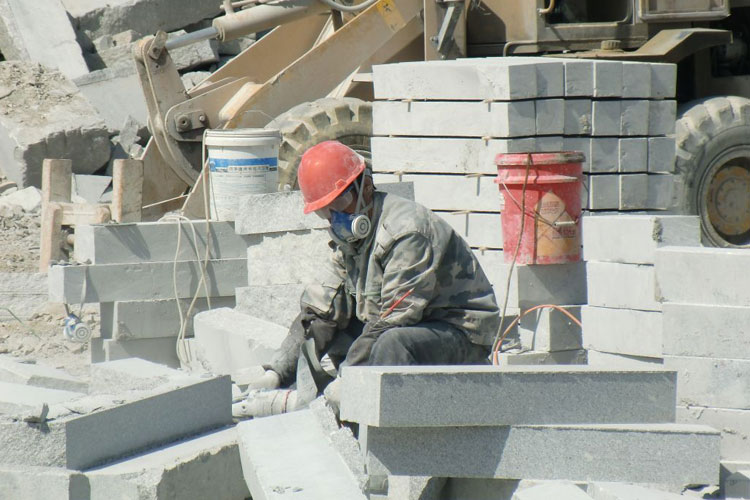Cement manufacturing is a crucial industry in many countries throughout the world. With the continued focus on infrastructure and housing development in many parts of the world, demand for cement has seen a steady rise. But, cement manufacturing and the raw materials used in the process pose a fire or explosion risk.
A fire or explosion in a cement manufacturing plant damages the property and or causes injuries or fatalities to workers. It is, therefore, important for all stakeholders to understand how to avert these dangers.
Cement Manufacturing Process
This process usually involves quarrying, drying and grinding, kiln burning, cooling, finish grinding and packaging.
Quarrying
This process consists of mining limestone, the raw material for making cement. 1.6 tons of limestone are needed to make 1 ton of cement.
Drying and Grinding
Rocks from the quarries are crushed and taken to a mix bed plant where the raw material components are pre-homogenized, dried and ground.
Kiln Burning and Cooling
The raw mix is delivered to an air separator where it’s divided into coarse and fine particles. The coarse materials are taken to the grinding mill and acceptable particles are transported to the homogenizing silos for blending.
Finish Grinding
Clinker granules from the silos are taken to the cement mill where they are grounded with additives such as gypsum to create cement. Ground cement is shifted to silos for safe keeping in conveyors.
Packaging and Loading
This is the part where cement is bagged, packed and transferred to trucks.
Fire Hazards
There are 5 fire hazards linked with cement manufacturing and they are as follows:
Coal Storage
The kiln uses roughly 0.3 tons of coal per kg of clinker cement production. Coal storage should be considered in the hazard analysis.
A coal fire can arise as a result of natural combustion caused by oxygen absorption at the outer and inner surface of coal leading to oxidation.
Oxidation is an exothermic reaction that makes the temperature of the coal to go up and if the coal pile exceeds 800C, ignition can take place.
Coal Conveying
Crushed coal poses a flammable danger in the conveying system as the resistance between rollers and idlers, belt misalignment, insufficient lubrication and faulty bearing can cause heat sparks, which can ignite the crushed coal combustible dust.
On-Site Power Plant
The process of manufacturing cement is an energy-intensive one and this leads to fire hazards such as ignition of lube oil. Also, fuel oil fires and fire in the power plant boiler and cable gallery fires can occur.
Electrical Cables and Equipment
A cement manufacturing plant has heavy-duty electrical equipment installed for control, distribution, and utilization of electric power. Insulation oil used in transformers, capacitors, and switchgear are combustible and pose a fire hazard. Also, any cable joint as a result of modification poses a risk.
Empty Bag Storage
Storage bags are made of combustible material meaning that they can easily catch and spread the fire.
Explosion Hazards
Coal Pulverizing
Coal pulverizing machines grind the coal to smaller sizes for use in the kiln and this increases the chances of an explosion or fire. Coal dust is a combustible dust that can easily explode when all the elements that cause fire are present.
Bag Filters
Dust explosion, static electricity, spontaneous combustion, and high-temperature materials passing through the filters can cause fire or explosion. The bag filters used for coal mills pose the highest fire or explosion risks in cement plants due to the minute size of the crushed coal.
Electrostatic Precipitators
If coal dust or other explosive mixtures are left to collect in electrostatic precipitators, the chances of an explosion are high.
Storage and Handling of Explosives
Limestone quarrying uses explosives. These explosives should be stored safely to avoid an unexpected detonation.
Power Plant Boilers
If the power plant boilers are left unattended to, the chances of an explosion are high.
Conclusion
There is one more issue that we did not highlight in this article, that of respiratory hazards. Cement plants are dusty and if the workers inhale the dust in large amounts, they face many health complications.
Inhaling cement dust leads to lung function impairment, carcinoma of the lungs and colon, chronic obtrusive lung disease, pneumoconiosis and restrictive lung disease. Cement dust can also enter the systemic circulation and get to body organs such as the liver, heart, spleen, muscles and even hair and this affects the performance of the physiological and microstructure.
Safety experts should be called in to analyze, design, and implement the processes to thwart these hazards.













